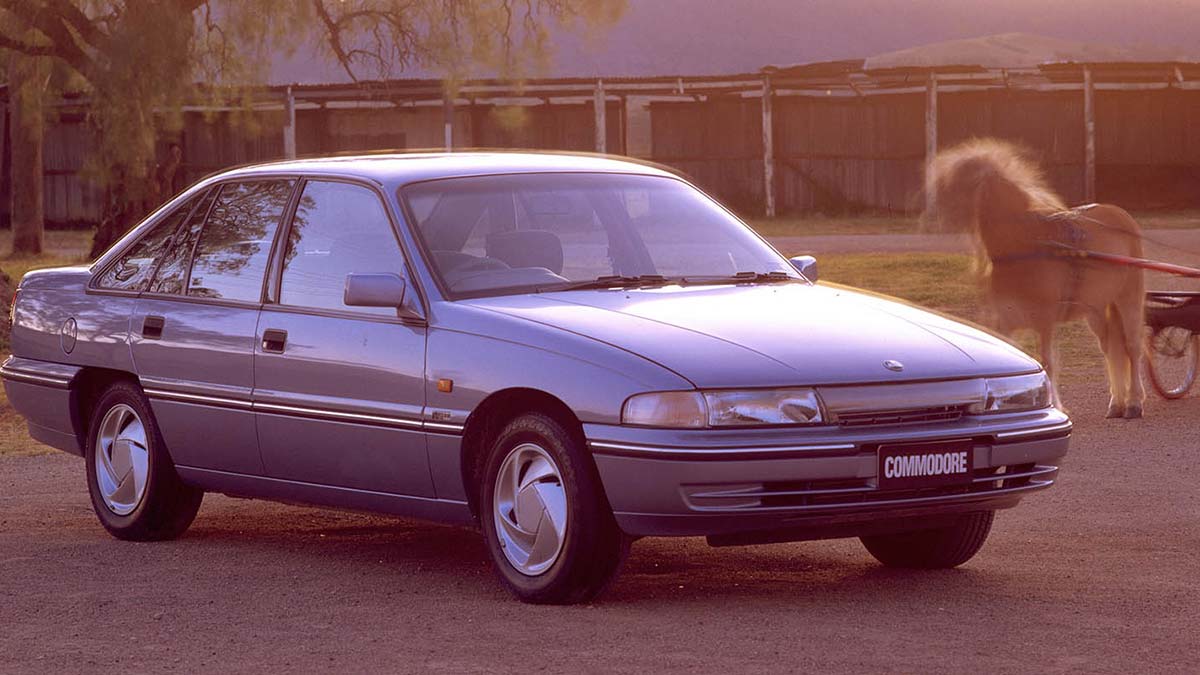Our summers are getting hotter and extreme weather events are increasing, so it’s more important than ever to know how to keep cool during a heatwave. Here’s a guide on how to prepare for a heatwave and how to stay cool when the temperature rises.
Death of an Aussie icon: Holden kills the Commodore
End of an era as GM Holden cuts the Commodore from its Aussie car line-up in 2020.
One of the longest-running vehicle nameplates in Australia, and an icon of the local automotive industry, is dead. GM Holden has announced that the Commodore will be dropped from its line-up in 2020, ending a 42-year run as one of the country’s most popular vehicles.
Holden says it is streamlining its line-up to focus on SUVs and light commercial vehicles. The car maker is also axing the Astra small hatchback.
While the news is likely to shock fans, the writing has been on the wall for the Commodore for some time.
Sales of large sedans have been in consistent decline for years now as buyers shift to high-riding SUVs and dual-cab pick-ups. As Holden points out, at their peak in 1998, large cars in Australia accounted for 217,882 sales, while this year registrations are projected to hit about 8700.
The Commodore’s decline has been particularly swift in the past two years. Holden’s US parent company General Motors closed its Australian manufacturing operations in October 2017, ending 69 years of local vehicle production. Unlike Ford, which decided to axe its iconic Falcon nameplate when it closed its factory doors in 2016, Holden continued the Commodore moniker on a new, fully imported model based on the Opel Insignia.
The new version, launched in February 2018, caused a stir among rusted-on Commodore fans not only because it was the first imported Commodore – sourced from then-GM sister brand Opel of Germany – it was the first front or all-wheel drive rather than rear-drive Commodore, and for the first time ever there was no V8 option. (More: Do you remember these classic Nissan sports cars?)
Since the first locally built VB Commodore launched in 1978 as an Opel-based model, Holden has sold more than three million Commodores in Australia and New Zealand. Over the years it was also the focus of a number of export programs to the Middle East, South America and the United States.
At the height of its popularity, the Commodore was the best-selling vehicle in Australia for 15 consecutive years from 1996 to 2010. Its 42-year run has produced 16 Commodore models, including iconic generations such as the VL and VN from the mid-to-late 1980s, and the hugely successful VT Commodore from 1997 to 2000 – the best-selling Commodore of all time.
The VE, launched in 2006, was the first Commodore to be completely developed in Australia rather than being based on an adapted Opel-sourced platform. Due to the enormous cost of in-house development, it was dubbed Holden’s ‘billion-dollar baby’.
The VF from 2013 to 2017 was a major overhaul of the VE and was the final Australian-built Commodore. It was widely regarded by critics as the best Commodore ever. Despite slow sales, the German-built ZB Commodore from 2018 is an appealing offering and Holden says diminishing stocks of this car will be available throughout 2020.
While the Commodore is best known as a sedan, station wagon and ute, there have been a number of variations of the model throughout its life, with varying degrees of success. The Adventra from 2003 was designed as a rival for the likes of the Subaru Outback. Based on the VY Commodore wagon, it had a jacked-up ride height and SUV-like cladding. Also based on the VY was the Crewman, which was a four-door version of the Commodore ute. It was dropped after four years.
More successful, however, was the reborn Monaro coupe from 2001. Based on the VX Commodore but with two doors and a sportier profile, the Monaro was a massive hit for Holden in Australia, giving the brand a ‘halo’ sports car it had lacked for decades. It was exported to the US as a Pontiac GTO and the updated version from 2004 was offered with a powerful 5.7-litre V8 that was also found in the Chevrolet Corvette.
Holden has had great success with the Commodore in racing, winning the Bathurst 1000 race 26 times and taking out 16 Australian Touring Car/Supercar championships over the years. The racing rivalry between Holden and Ford simmered over the decades but dropped off significantly in recent years.
The Holden Commodore SS-V sedan
Holden is also deleting another Opel-sourced model, the Astra that arrived in late 2016, from its line-up. Opel was GM’s European outpost until that brand was bought in 2017 by French giant PSA Group, which owns Peugeot and Citroen. Given Opel’s new owners, Holden was faced with a decision to replace the Astra and Commodore with other models from GM’s US portfolio when the current models end, or discontinue both models.
The Astra first appeared as a rebadged Nissan Pulsar from 1984 to 1989, before disappearing for a few years to make way for the Toyota Corolla-based Holden Nova. The Astra returned as an Opel-sourced model in 1996, running across three generations until 2009. It returned in two different generations from 2015 to now.
In April last year Holden dropped the Spark micro car from its line-up, while the Barina light car – which had been a Holden nameplate for 33 years – was axed in September 2018, leaving the Commodore and Astra as the only non-SUV or light commercial vehicle products in its portfolio. The remaining models in Holden’s line-up are the Colorado pick-up, and the Trax, Equinox, Acadia and Trailblazer SUVs. Next year, Holden is also set to sell the all-new Chevrolet Corvette sports car through its dealer network for the first time in that model’s history.








